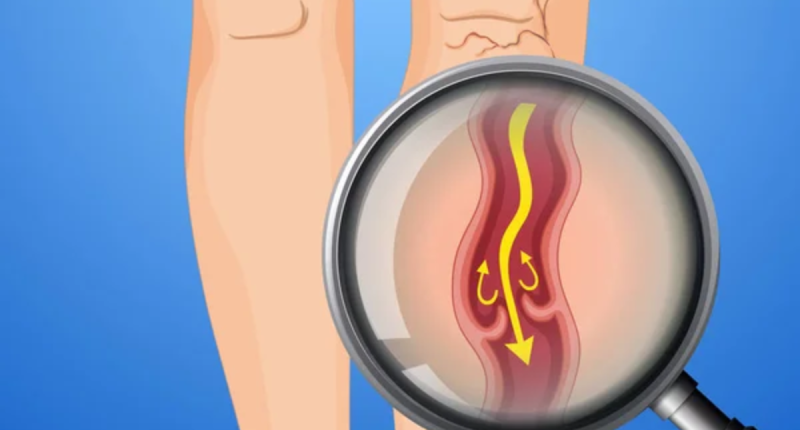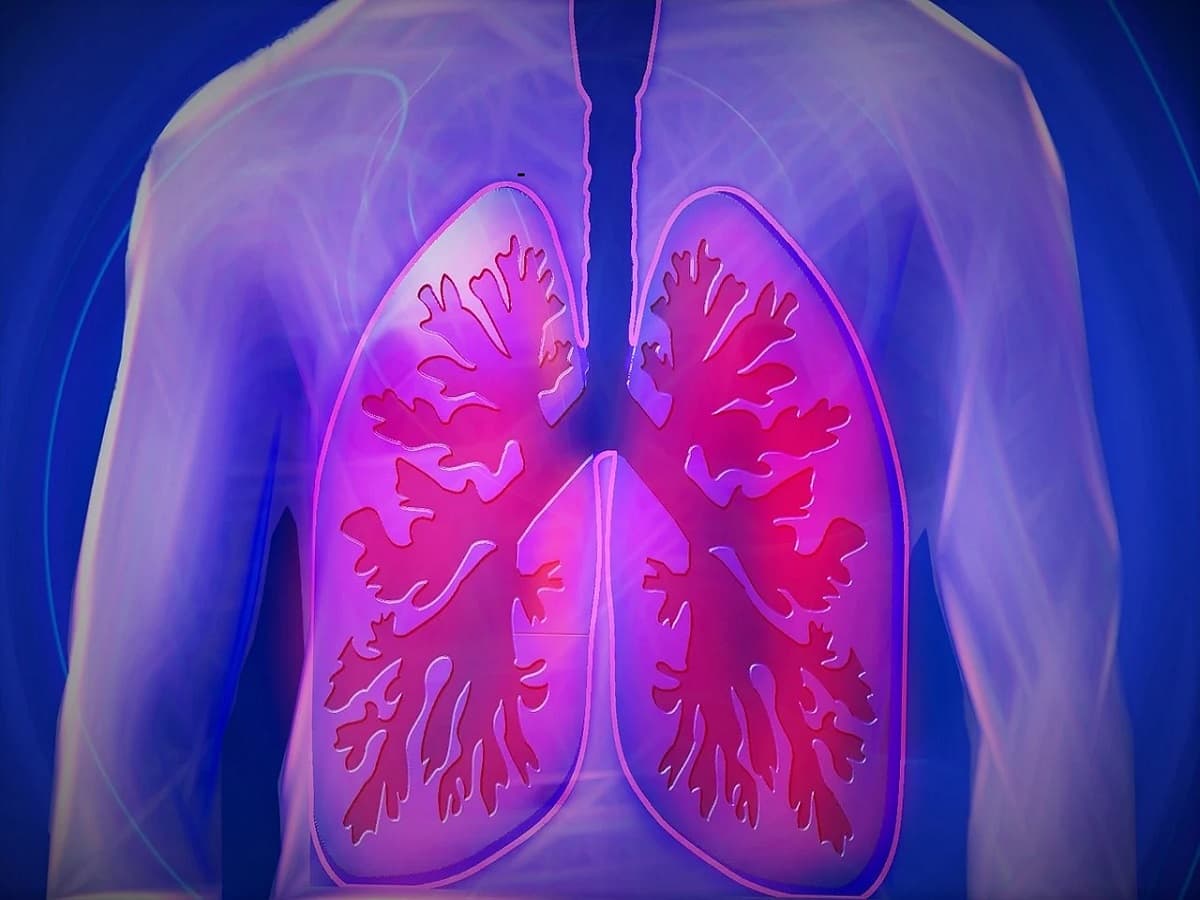Deep vein thrombosis (DVT) is a condition reported to affect an estimated 900,000 people in the United States each year. It occurs when a blood clot forms in a deep vein, usually in the leg or pelvis. Blood clots can form when blood flow slows down or becomes stagnant. This can happen for a number of reasons, including:
- Inactivity or prolonged sitting: When you are inactive, the blood in your veins does not flow as well. This can increase the risk of a blood clot forming.
- Recent surgery or hospitalization: Surgery or hospitalization can damage veins or cause blood to flow more slowly. This can increase the risk of a blood clot forming.
- Injury to a vein: An injury to a vein can damage the lining of the vein and make it more likely that a blood clot will form.
- Certain medications: Some medications, such as birth control pills and hormone replacement therapy, can increase the risk of blood clots.
- Pregnancy: Pregnancy increases the risk of blood clots because the body produces more clotting factors during pregnancy.
- Obesity: Obesity is a risk factor for blood clots because it can increase blood pressure and make it more difficult for blood to flow through the veins.
- Smoking: Smoking damages the lining of blood vessels and can increase the risk of blood clots.
- Cancer: Cancer can increase the risk of blood clots because it can cause the body to produce more clotting factors.
- Family history of DVT: If you have a family history of DVT, you are at increased risk of developing the condition yourself.
When blood flow slows down or becomes stagnant, the blood cells can start to stick together. This can lead to the formation of a blood clot. If a blood clot breaks loose from the vein wall, it can travel through the bloodstream and lodge in a blood vessel in the lungs. This is called a pulmonary embolism (PE). PE can be a life-threatening condition.
The Virchow triad is a combination of three factors that can increase the risk of blood clots:
- Hypercoagulability: This is a condition that makes the blood more likely to clot.
- Stasis: This is when blood flow slows down or becomes stagnant.
- Endothelial injury: This is damage to the lining of a blood vessel.
Also read | 5 Factors That Can Cause Varicose Veins

Men or women: who are affected more?
Deep vein thrombosis (DVT) can occur in both men and women. However, there are some factors that can increase the risk of DVT in women, such as:
- Pregnancy
- Birth control pills
- Hormone replacement therapy
These factors can increase the levels of estrogen in the body, which can make the blood more likely to clot.
In addition, women are more likely to be obese than men, and obesity is a risk factor for DVT.
Overall, the risk of DVT is slightly higher in women than in men. However, men can also develop DVT, and it is important for both men and women to be aware of the risk factors and symptoms of this condition.
Symptoms
The symptoms of deep vein thrombosis (DVT) can vary depending on the location of the clot. However, some common symptoms include:
- Swelling in the affected leg or arm
- Pain or tenderness in the affected area
- Warmth or redness in the affected area
- Skin discoloration (red, blue, or purple)
- Visible veins in the affected area
- A feeling of tightness or fullness in the affected area
In some cases, people with DVT may not experience any symptoms. This is known as silent DVT. Silent DVT can be dangerous because it can go undetected and lead to a pulmonary embolism (PE).
Treatment options
Deep vein thrombosis (DVT) is treatable. The treatment typically involves medication to thin the blood and prevent the clot from growing or breaking loose and to reduce the risk of complications. In some cases, surgery may be necessary to remove the clot.
- Blood thinners (anticoagulants): These medications work by preventing the blood from clotting. Blood thinners can be taken by mouth or given by injection. Common blood thinners used to treat DVT include heparin, warfarin (Coumadin), rivaroxaban (Xarelto), apixaban (Eliquis), and edoxaban (Lixiana).
- Clot busters (thrombolytics): These medications are used to dissolve blood clots. Clot busters are typically given by injection or through a catheter placed directly into the clot. Common clot busters used to treat DVT include alteplase (Activase), reteplase (Retavase), and tenecteplase (TNKase).
- Filters: In some cases, a filter may be placed in a vein to prevent blood clots from traveling to the lungs. Filters are typically used in people who are at high risk of developing a pulmonary embolism (PE).
- Surgery: In rare cases, surgery may be necessary to remove a large blood clot. Surgery is typically only used if other treatments are not effective.
In addition to medication, there are a number of things you can do to help prevent DVT:
- Stay active: Move around regularly to keep your blood flowing. If you are on a long flight or car trip, get up and move around every hour or so.
- Wear loose-fitting clothing: Tight clothing can restrict blood flow.
- Maintain a healthy weight: Being overweight or obese increases your risk of DVT.
- Do not smoke: Smoking damages the lining of blood vessels and can increase the risk of blood clots.
- If you are pregnant, talk to your doctor about ways to reduce your risk of DVT.
If you have any questions or concerns about DVT, please talk to your doctor.
Possible complications If not treated
The complications of untreated deep vein thrombosis (DVT) can be serious and even life-threatening. Some of the most common complications include:
- Pulmonary embolism (PE): This is the most serious complication of DVT. It occurs when a blood clot breaks loose from the leg and travels to the lungs. PE can block blood flow to the lungs and can be fatal.
- Post-thrombotic syndrome (PTS): This is a condition that can develop after DVT. PTS can cause pain, swelling, and skin changes in the affected leg. PTS can be a chronic condition that can last for years or even decades.
- Chronic venous insufficiency (CVI): This is a condition that occurs when the veins in the legs are not able to pump blood back to the heart as effectively as they should. CVI can cause swelling, pain, and skin changes in the legs.
- Venous ulcers: These are open sores that can develop on the skin of the legs. Venous ulcers are difficult to heal and can become infected.
- Gangrene: This is a condition in which tissue dies due to lack of blood flow. Gangrene can occur in the toes, feet, or legs. In severe cases, gangrene may require amputation.
In addition to these complications, untreated DVT can also increase the risk of recurrent DVT. Recurrent DVT is a condition in which a person develops a new blood clot after having a previous DVT.
If you think you may have DVT, it is important to see a doctor right away. Early diagnosis and treatment of DVT can help to reduce the risk of complications.
Don’t miss: 7 Conditions Spider Veins are Signs of
Experts advice
- Dr. Mary Cushman, Professor of Medicine at the University of Vermont Larner College of Medicine:
“The most important thing to remember about DVT is that it is a preventable condition. If you are at risk for DVT, there are a number of things you can do to reduce your risk, such as staying active, wearing loose-fitting clothing, and maintaining a healthy weight. If you experience any of the symptoms of DVT, such as swelling, pain, or redness in the leg, it is important to see a doctor right away.”
- Dr. David Geffen, Professor of Medicine at the University of California, Los Angeles:
“DVT is a serious condition that can lead to life-threatening complications. If you are diagnosed with DVT, it is important to follow your doctor’s instructions carefully. This will help to ensure that you receive the best possible treatment and that your risk of complications is minimized.”
In addition to the advice of these experts, here are some other tips for preventing DVT:
- If you are traveling for a long period of time, get up and move around every hour or so.
- If you are sitting for a long period of time, take breaks to walk around.
- Drink plenty of fluids.
- Avoid smoking.
- Maintain a healthy weight.
- If you have any medical conditions that increase your risk of DVT, talk to your doctor about ways to reduce your risk.
If you have any concerns about DVT, please talk to your doctor.









